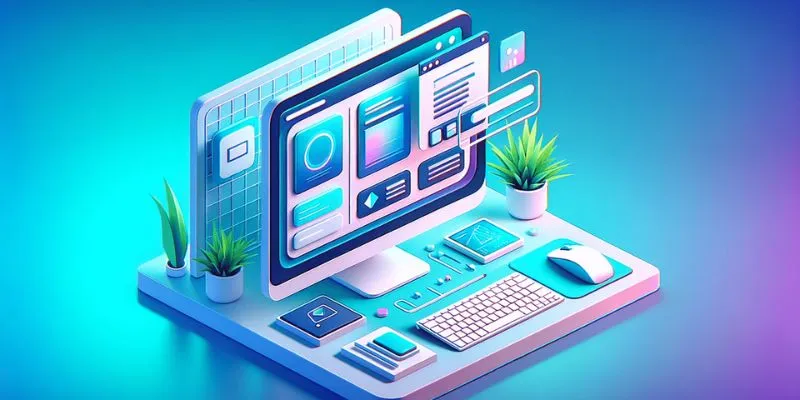
User interfaces (UI) have evolved significantly over the years, and today, it’s no longer just about static screens. Motion design has taken center stage in enhancing how users interact with digital products. Whether you’re browsing an app, shopping on a website, or using a software tool, smooth transitions and interactive animations make the experience much more engaging and intuitive.
In this blog, we’ll explore how motion design improves user interfaces and why it has become a critical aspect of modern UI/UX design. If you’re passionate about crafting beautiful and functional interfaces, a UI UX Designer Course in Chennai can help you gain the skills you need.
What Is Motion Design in UI/UX?
Motion design involves adding animations, transitions, and micro-interactions to a user interface to enhance its usability and appeal. It’s not about flashy graphics or over-the-top effects—it’s about guiding the user, providing feedback, and improving the overall experience.
For example:
- A loading animation reduces frustration while users wait for content to load.
- Smooth transitions between pages make navigation feel natural.
- Interactive buttons that respond to clicks give users confidence that their action was registered.
When done right, motion design is subtle, purposeful, and incredibly effective in creating delightful user experiences.
Role of Motion Design in User Interfaces
Motion design isn’t just for show; it serves practical purposes that improve usability and functionality. Let’s break it down:
1. Improving User Guidance
Motion design helps guide users seamlessly through an interface. Imagine opening a mobile app where new elements slide into view, drawing your attention to important features. These animations act as visual cues that lead users to the right actions without needing complex instructions.
If you’re keen on mastering such techniques, a UI UX Course in Bangalore can teach you how to implement motion effectively.
2. Enhancing Visual Feedback
Visual feedback is crucial in ensuring users know their actions are being recognized. Motion design achieves this beautifully. Think about:
- Buttons that change color or ‘bounce’ slightly when clicked.
- Forms that shake when input errors occur.
- Icons that animate to confirm a successful action.
These micro-interactions make the interface feel alive and responsive, significantly improving user satisfaction.
3. Creating Smooth Transitions
Nothing feels more jarring than sudden screen changes or abrupt content updates. Motion design solves this problem by introducing smooth transitions. For example:
- When you navigate between pages, content can fade or slide in elegantly.
- Dropdown menus can expand gracefully, showing options one at a time.
Such fluid movements not only make the interface look polished but also help users understand the flow of information.
4. Making Content More Engaging
Motion design can transform static content into something dynamic and engaging. A simple example is text or images that animate when you scroll through a webpage. This kind of motion grabs attention and encourages users to interact more with the content.
Whether it’s a subtle hover effect or animated charts that visualize data, motion makes the interface more enjoyable and visually appealing. If you’re a designer looking to expand your creative toolbox, learning motion design techniques is a must. For professionals looking to complement their design skills with marketing expertise, exploring Digital Marketing Courses in Chennai could be a strategic next step.
5. Adding Personality to the Interface
A great UI isn’t just functional—it’s memorable. Motion design allows designers to infuse personality into the interface. For instance:
- Fun loading animations that entertain users while they wait.
- Playful transitions that reflect the brand’s tone and style.
These small details create a connection between the product and the user, making the experience feel human rather than mechanical.
A UI UX Course in Bangalore is a great way to learn these skills hands-on.
How to Use Motion Design Effectively
While motion design can elevate an interface, overdoing it can have the opposite effect. Here are some tips to use it effectively:
- Keep it Purposeful: Every animation should serve a purpose—whether it’s guiding the user, giving feedback, or enhancing the flow.
- Stay Subtle: Motion should feel natural, not distracting or overwhelming.
- Optimize for Performance: Ensure animations are smooth and don’t slow down the interface, especially on mobile devices.
Mastering motion design requires practice, creativity, and a strong understanding of UI/UX principles.
Connection Between Motion Design and Marketing
Interestingly, motion design also plays a role in digital marketing. Engaging animations can capture attention, improve brand storytelling, and boost user engagement—all of which are essential for successful marketing campaigns.
If you’re a marketer looking to leverage visuals in your campaigns, learning motion design basics alongside enrolling in Digital Marketing Courses in Bangalore can give you a competitive edge.
Motion design is no longer a nice-to-have feature—it’s an essential element of modern user interfaces. By guiding users, providing feedback, and adding personality to the interface, motion design creates experiences that are both functional and delightful.
